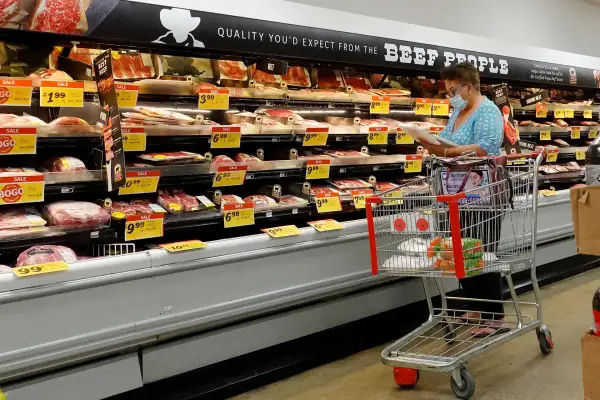Here's Where Inflation Is Worst in America

Consumers are facing the biggest price increases since the early 1980s — and inflation is much higher than the national rate in certain parts of the country. How high? In one area (Tampa Bay), inflation is running at nearly 10%.
The Labor Department reported that consumer prices soared 7.5% nationally between January 2021 and January 2022, marking the highest rate since February 1982 and topping last month’s 7% rate to set a new 40-year high.
Fueling the national inflation rate are skyrocketing energy and grocery prices. Gasoline prices are up 40% from last year, with overall energy prices up 27%. The cost of meat, poultry, fish and eggs spiked 12.2%, while grocery prices rose 7.4%.
“Americans’ budgets are being stretched in ways that create real stress at the kitchen table,” said President Joe Biden, in response to the inflation report.
An estimation from Ryan Sweet, an economist at Moody’s Analytics, suggests inflation is costing the average household an extra $276 per month.
Where inflation is highest
While inflation is putting a drain on wallets all over the country, residents in several regions are dealing with rates higher than the national one.
According to Labor Department data, inflation is above 7.5% in the Midwest, the South and the West. Perhaps surprisingly, inflation in the Northeast is trending much lower than that.
Here are the inflation rates by region:
- Midwest: 7.9%
- South: 7.8%
- West: 7.7%
- Northeast: 6.3%
Additionally, the Labor Department tracks inflation in key major metropolitan areas. Based on the currently available data, the Tampa Bay region has the highest inflation rate in the country.
Here’s a look at inflation in several major metro areas:
- Tampa, Florida: 9.6%
- Riverside, California: 8.6%
- San Diego: 8.2%
- Denver: 7.9%
- Dallas: 7.8%
- Los Angeles: 7.5%
- Minneapolis: 7.2%
- Chicago: 6.8%
- Boston: 6.3%
- Washington, D.C.: 6%
- New York: 5.1%
A 'turning point' for inflation?
As noted by Dean Baker, an economist and co-founder of the Center for Economic and Policy Research, not all prices are rising, which provides “some grounds for optimism.”
“The positive story is flat prices for cars, price drops for items like beef [and] TVs,” Baker wrote in response to the inflation report, “and sharp drops in the rental index suggests a turning point.”
Likewise, President Biden struck an optimistic tone when he addressed inflation on Feb. 10.
“Forecasters continue to project inflation easing substantially by the end of 2022,” Biden said. “And fortunately we saw positive real wage growth last month and moderation in auto prices, which have made up about a quarter of headline inflation over the last year.”
Baker also noted that some seasonal trends could be at play, as the headline inflation rates are not seasonally adjusted. At the start of the year, several major companies — including Netflix, Amazon and many big-name restaurants — hiked prices. According to Baker, those kinds of price increases aren’t likely to happen again in the upcoming months.
“Seasonal factors matter,” he wrote.
More from Money:
How 'I Bonds' Can Rescue Your Savings from Inflation
As Prices Spike, Here's Why You Need to Calculate Your 'Personal Inflation Rate'
Layoffs and Unemployment Are Reaching Record Lows. But the Numbers May Be Misleading

